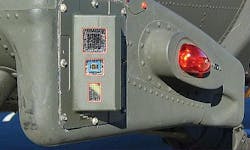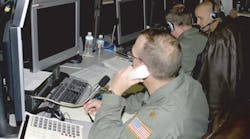REDSTONE ARSENAL, Ala., 28 Aug. 2013. U.S. Army aviation experts needed a laser-detection system to help protect helicopters from anti-aircraft weapons that use laser rangefinders, laser designators, and blinding lasers. They found their solution from the UTC Aerospace Systems ISR Systems segment in Danbury, Conn.
Officials of the Army Contracting Command at Redstone Arsenal, Ala., announced a $208.5 million multi-year contract to UTC Aerospace Monday for Army/Navy Piloted Aircraft/Visual and Visible Light/Receiving, Passive Detecting (AN/AVR-2B) Laser Detecting Sets (LDS).
The AN/AVR-2 LDS helicopter avionics system is a passive laser warning system that receives, processes, and displays threat information when the helicopter is illuminated by lasers to enable the flight crew to take evasive action.
Short-range air-defense missiles and anti-aircraft artillery typically use laser guidance. The LDS displays threat information on the AN/APR-39A(V)1 radar detecting set indicator in the cockpit. The system has an interface unit comparator and four identical sensor units.
The helicopters that can carry the AN/AVR-2 LDS include the U.S. Marine Corps AH-1F Cobra gunship, the Army AH-64 Apache attack helicopter, the Army MH-60K and EH-60A Black Hawk helicopters, the MH-47E heavy-lift helicopter, and the OH-58D Kiowa armed reconnaissance helicopter.
The AN/AVS-2B(V) version of the LDS was derived from technology developed for the cancelled RAH-66 Comanche program. The system is reported to be 40 percent smaller, 45 percent lighter, and to use 45 percent less power than the previous AN/AVR-2A(V) version.
The system provides increased capability for threat detection and data interface and has demonstrated a 500 percent improvement in reliability. The model was introduced into service in 2004.
For more information contact UTC Aerospace ISR Systems online at http://utcaerospacesystems.com, or the Army Contracting Command at www.army.mil/acc.



